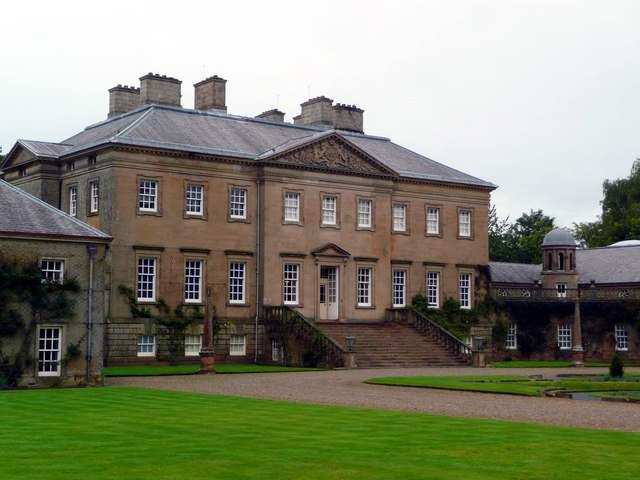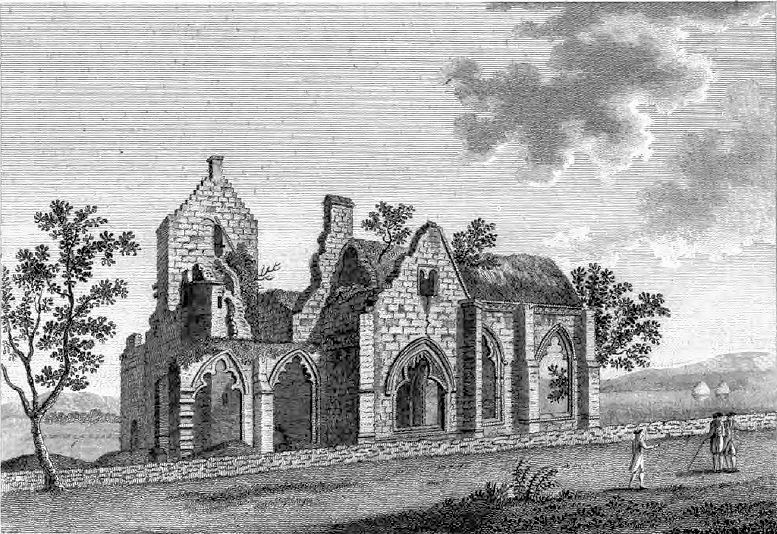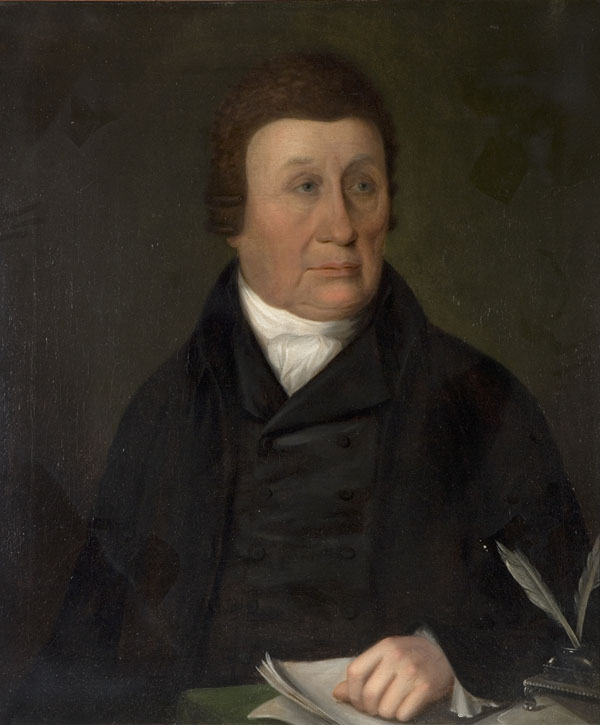|
John Crichton-Stuart, 2nd Marquess Of Bute
John Crichton-Stuart, 2nd Marquess of Bute, Knight of the Thistle, KT, Fellow of the Royal Society, FRS (10 August 1793 – 18 March 1848), styled Lord Mount Stuart between 1794 and 1814, was a wealthy Scottish aristocrat and industrialist in Georgian era, Georgian and early Victorian era, Victorian Britain. He developed the coal and iron industries across South Wales and built the Cardiff Docks. Bute's father, John Stuart, Lord Mount Stuart, John, Lord Mount Stuart, died a few months after he was born and as a young child he was brought up first by his mother, the former Lady Elizabeth McDouall-Crichton, and later by his paternal grandfather, John Stuart, 1st Marquess of Bute. He travelled widely across Europe before attending Cambridge University. He contracted an eye disease, eye condition and remained partially sighted for the rest of his life. Having inherited large estates across Britain, he married his first wife, Lady Maria North, in 1818, and together they lived a rela ... [...More Info...] [...Related Items...] OR: [Wikipedia] [Google] [Baidu] |
The Most Honourable
The honorific prefix "The Most Honourable" is a form of address that is used in several countries. In the United Kingdom, it precedes the name of a marquess or marchioness. Overview In Jamaica, Governor-General of Jamaica, Governors-General of Jamaica, as well as their spouses, are entitled to be styled "The Most Honourable" upon receipt of the Jamaican Order of the Nation."National Awards of Jamaica" Jamaica Information Service, accessed May 12, 2015. Prime Minister of Jamaica, Prime Ministers of Jamaica, and their spouses, are also styled this way upon receipt of the Order of the Nation, which is only given to Jamaican Governors-General and Prime Ministers. In The Bahamas, the style "The Most Honourable" is given to recipients of the Bahamian Order of the Nation (Bahamas), Order of the Nation. [...More Info...] [...Related Items...] OR: [Wikipedia] [Google] [Baidu] |
John Crichton-Stuart, 3rd Marquess Of Bute
John Patrick Crichton-Stuart, 3rd Marquess of Bute, (12 September 1847 – 9 October 1900) was a Scottish landed aristocrat, industrial magnate, antiquarian, scholar, philanthropist, and architectural patron. When Bute succeeded to the marquisate at the age of just six months, his vast inheritance reportedly made him the richest man in the world. He owned mostly in Glamorgan, Ayrshire and Bute. His conversion to Catholicism from the Church of Scotland at the age of 21 scandalised Victorian society and led Prime Minister Benjamin Disraeli to use the Marquess as the basis for the eponymous hero of his novel '' Lothair'', published in 1870. Marrying into one of Britain's most illustrious Catholic families, that of the Duke of Norfolk, Bute became one of the leaders of the British Catholic community. His expenditure on building and restoration made him the foremost architectural patron of the 19th century. Lord Bute died in 1900, at the age of 53; his heart was buried on th ... [...More Info...] [...Related Items...] OR: [Wikipedia] [Google] [Baidu] |
Dumfries House
Dumfries House is a Palladian country house in Ayrshire, Scotland. It is located within a large estate, around west of Cumnock. Noted for being one of the few such houses with much of its original 18th-century furniture still present, including specially commissioned Thomas Chippendale pieces, the house and estate is now owned by The King's Foundation, a charity which maintains it as a visitor attraction and hospitality and wedding venue. Both the house and the gardens are listed as significant aspects of Scottish heritage. The estate and an earlier house were originally called Lefnoreis Castle, owned by a branch of the Craufurds of Loudoun. The present house was built in the 1750s for William Dalrymple, 5th Earl of Dumfries, by John and Robert Adam. Having been inherited by the 2nd Marquess of Bute in 1814, it remained in his family until 2007 when the 7th Marquess sold it. Due to its significance and the risk of the furniture collection being distributed and auctioned, i ... [...More Info...] [...Related Items...] OR: [Wikipedia] [Google] [Baidu] |
Dumfries House - Frontage - Geograph
Dumfries ( ; ; from ) is a market town and former royal burgh in Dumfries and Galloway, Scotland, near the mouth of the River Nith on the Solway Firth, from the Anglo-Scottish border. Dumfries is the county town of the historic county of Dumfriesshire. Before becoming King of Scots, Robert the Bruce killed his rival John Comyn III of Badenoch at Greyfriars Kirk in the town in 1306. The Young Pretender had his headquarters here towards the end of 1745. In World War II, the Norwegian armed forces in exile in Britain largely consisted of a brigade in Dumfries. Dumfries is nicknamed ''Queen of the South''. This is also the name of the town's football club. People from Dumfries are known colloquially in Scots language as ''Doonhamers''. Toponymy There are a number of theories on the etymology of the name, with an ultimately Celtic derivation (either from Brythonic, Gaelic or a mixture of both) considered the most likely. The first element is derived either from the elemen ... [...More Info...] [...Related Items...] OR: [Wikipedia] [Google] [Baidu] |
Lord Patrick Crichton-Stuart
Lord Patrick James Herbert Crichton-Stuart (25 August 1794 – 7 September 1859), known as the Hon. Patrick Stuart until 1817, was a British politician. Born Patrick Stuart, he was the second son of John Stuart, Lord Mount Stuart, eldest son of John Stuart, 1st Marquess of Bute, son of Prime Minister John Stuart, 3rd Earl of Bute. His mother was Lady Elizabeth Penelope, daughter and heiress of Patrick McDouall-Crichton, 6th Earl of Dumfries, while John Crichton-Stuart, 2nd Marquess of Bute, was his elder brother. His father was killed in a riding accident six months before he was born and his mother died when he was three. In 1817 he was granted the rank of a younger son of a marquess and assumed by Royal licence the surname of Crichton. The following year he was returned to Parliament for Cardiff, succeeding his uncle Lord Evelyn Stuart, a seat he held until 1820 and again from 1826 to 1832. Between 1847 and 1859 he also served as Lord-Lieutenant of Buteshire. Crichton-Stua ... [...More Info...] [...Related Items...] OR: [Wikipedia] [Google] [Baidu] |
Marquess Of Bute
Marquess of the County of Bute, shortened in general usage to Marquess of Bute, is a title in the Peerage of Great Britain. It was created in 1796 for John Stuart, 4th Earl of Bute. Family history John Stuart was the member of a family that descended from John Stewart (1360–1449), Sheriff of County of Bute, Bute, a natural son of Robert II of Scotland and his mistress Moira Leitch, married to Janet Sympil and in 1407 to Elizabeth Graham. This John Stewart was granted the lands of Isle of Bute, Bute, Isle of Arran, Arran and Cumbrae by his father. He was known as the 'Black Stewart' because of his dark complexion; his brother John Stewart of Dundonald was known as the 'Red Stewart'. The grant of lands was confirmed in 1400 by a Royal charter, charter of Robert III of Scotland, Robert III.Stewart Clan Scots Connection (accessed 12 ... [...More Info...] [...Related Items...] OR: [Wikipedia] [Google] [Baidu] |
Whitehall
Whitehall is a road and area in the City of Westminster, Central London, England. The road forms the first part of the A roads in Zone 3 of the Great Britain numbering scheme, A3212 road from Trafalgar Square to Chelsea, London, Chelsea. It is the main thoroughfare running south from Trafalgar Square towards Parliament Square. The street is recognised as the centre of the Government of the United Kingdom and is lined with numerous departments and ministries, including the Ministry of Defence (United Kingdom), Ministry of Defence, Horse Guards (building), Horse Guards, the Cabinet Office, and much of the Foreign Office. Consequently, the name "Whitehall" is used as a metonymy, metonym for the British Civil Service (United Kingdom), civil service and British government, government, and as the geographic name for the surrounding area. The Palace of Whitehall previously occupied the area and was the residence of Kings Henry VIII through to William III of England, William III, bef ... [...More Info...] [...Related Items...] OR: [Wikipedia] [Google] [Baidu] |
Cardiff Castle
Cardiff Castle () is a medieval castle and Victorian Gothic revival mansion located in the city centre of Cardiff, Wales. The original motte and bailey castle was built in the late 11th century by Norman invaders on top of a 3rd-century Roman fort. The castle was commissioned either by William the Conqueror or by Robert Fitzhamon, and formed the heart of the medieval town of Cardiff and the Marcher Lord territory of Glamorgan. In the 12th century the castle began to be rebuilt in stone, probably by Robert of Gloucester, with a shell keep and substantial defensive walls being erected. Further work was conducted by the 6th Earl of Gloucester in the second half of the 13th century. Cardiff Castle was repeatedly involved in the conflicts between the Anglo-Normans and the Welsh, being attacked several times in the 12th century, and stormed in 1404 during the revolt of Owain Glyndŵr. After being held by the de Clare and Despenser families for several centuries, the castle was ... [...More Info...] [...Related Items...] OR: [Wikipedia] [Google] [Baidu] |
Merthyr Rising
The Merthyr Rising, also referred to as the Merthyr Riots, of 1831 was the violent climax to many years of simmering unrest among the large working class population of Merthyr Tydfil in Wales and the surrounding area. The Rising marked the first time the red flag was used a symbol of working class rebellion in the United Kingdom. Beginnings Throughout May 1831 the coal miners and others who worked for William Crawshay, took to the streets of Merthyr Tydfil, calling for reform, protesting against the lowering of their wages and general unemployment. Gradually the protest spread to nearby industrial towns and villages and by the end of May the whole area was in rebellion, and it is believed that for the first time the red flag of revolution was flown as a symbol of workers' revolt. Events After storming Merthyr town, the rebels sacked the local debtors' court and the goods that had been collected. Account books containing debtors' details were also destroyed. Among the shouts ... [...More Info...] [...Related Items...] OR: [Wikipedia] [Google] [Baidu] |
Glamorganshire
Glamorgan (), or sometimes Glamorganshire ( or ), was one of the thirteen counties of Wales that existed from 1536 until their abolishment in 1974. It is located in the south of Wales. Originally an early medieval petty kingdom of varying boundaries known in Welsh as Morgannwg (or Glywysing), which was then invaded and taken over by the Normans as the Lordship of Glamorgan. The area that became known as Glamorgan was both a rural, pastoral area, and a conflict point between the Norman lords and the Welsh princes. It was defined by a large concentration of castles. After falling under English rule in the 16th century, Glamorgan became a more stable county, and exploited its natural resources to become an important part of the Industrial Revolution. Glamorgan was the most populous and industrialised county in Wales, and was once called the "crucible of the Industrial Revolution", as it contained the world centres of three metallurgical industries (iron, steel and copper) and ... [...More Info...] [...Related Items...] OR: [Wikipedia] [Google] [Baidu] |
Coal Mining
Coal mining is the process of resource extraction, extracting coal from the ground or from a mine. Coal is valued for its Energy value of coal, energy content and since the 1880s has been widely used to Electricity generation, generate electricity. Steel and cement industries use coal as a fuel for extraction of iron from iron ore and for cement production. In the United Kingdom and South Africa, a coal mine and its structures are a colliery, a coal mine is called a "pit", and above-ground mining structures are referred to as a "pit head". In Australia, "colliery" generally refers to an underground coal mine. Coal mining has had many developments in recent years, from the early days of men tunneling, digging, and manually extracting the coal on carts to large Open-pit mining, open-cut and Longwall mining, longwall mines. Mining at this scale requires the use of Dragline excavator, draglines, trucks, conveyors, hydraulic jacks, and shearers. The coal mining industry has a long ... [...More Info...] [...Related Items...] OR: [Wikipedia] [Google] [Baidu] |
Ironmaster
An ironmaster is the manager, and usually owner, of a forge or blast furnace for the processing of iron. It is a term mainly associated with the period of the Industrial Revolution, especially in Great Britain. The ironmaster was usually a large-scale entrepreneur and thus an important member of a community. He would have a large country house or mansion as his residence. The organization of operations surrounding the smelting, refining, and casting of iron was labour-intensive, and so there would be numerous workers reliant on the furnace works. There were ironmasters (possibly not called such) from the 17th century onward, but they became more prominent with the great expansion in the British iron industry during the Industrial Revolution. 17th-century ironmasters (examples) An early ironmaster was John Winter (Royalist), John Winter (about 1600–1676) who owned substantial holdings in the Forest of Dean. During the English Civil War he cast cannons for Charles I of England, ... [...More Info...] [...Related Items...] OR: [Wikipedia] [Google] [Baidu] |







